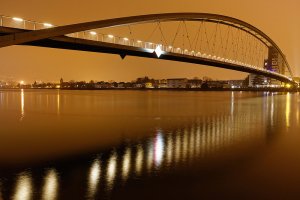"We still consider the EOS-1D X Mark III to be our flagship professional camera due to its extreme reliability and confidence it delivers in the hands of professionals. However, it is true that the EOS R3 exceeds the EOS-1D X Mark III in some specifications, to the extent which, by the conventional definition, you could consider it a flagship camera."
- Go Tokura, Chief Executive, Image Communication Business Operations at Canon (interview on DPR website.)
So it is, and isn't a flagship camera.
There is a small subset of people who care if their body is a "flagship." It would be illogical for Canon to tell people for whom the R3 is inappropriate that their 1D III isn't the flagship still. That subset of people tend to be the more macho crowd, which includes a higher percent of sports and PJ togs. The word/status issue isn't a fruitful discussion except where it suggests some insight into future body development. On that front, I find it confusing, as this non-1-series body is occupying the sports/pj, low-res slot. The only way I can make sense of this hierarchy in relation to future body developments is to assume that the R3 is actually supposed to be the wedding body (for which this is perfect), and that there will be a 1 series sports/pj update in a couple years, which will frustrate the bejeazus out of people with another low-ish resolution sensor.
Meanwhile the 5 series will continue to be the 5 series, all-rounder and studio shooter, with a higher-res update on roughly a 4 year refresh schedule. It turns out that the 5DSR was a one-off. I think we can safely call that one. This means that it is less likely we'll see a mirrorless equivalent of it. The 80-120 mp range gives significantly less incremental value versus the 5DSR's jump from the 20's to the 50s. This is a prediction I hope is incorrect, as I'm among the minority who could use 80 mp (reach limited wildlife and macro).
If you step back, you may recall that the flagship or best body in a lineup is going to be different to different people and use cases. The studio/all-rounder user base of the R5 aren't overly-exercised about their camera attaining this flagship status. Which is exactly why it makes sense for a brand give that flagship label to the camera used by the group most insecure about their masculinity.
Notably, I believe the R3 was actually designed ergonomically for women. I believe this gender thing is going to play out in an interesting way, and the R3 becoming known as a feminine product is undesirable to Canon; thus the sports emphasis in messaging.
The R3 is going to (functionally) be the flagship for a couple years until the R1 comes out. Neuro, unfortunately, is right on the inexorable schedule of Canon. The company comes out with some tech innovations on occasion, but much more rarely moves up a schedule.
Upvote
0

